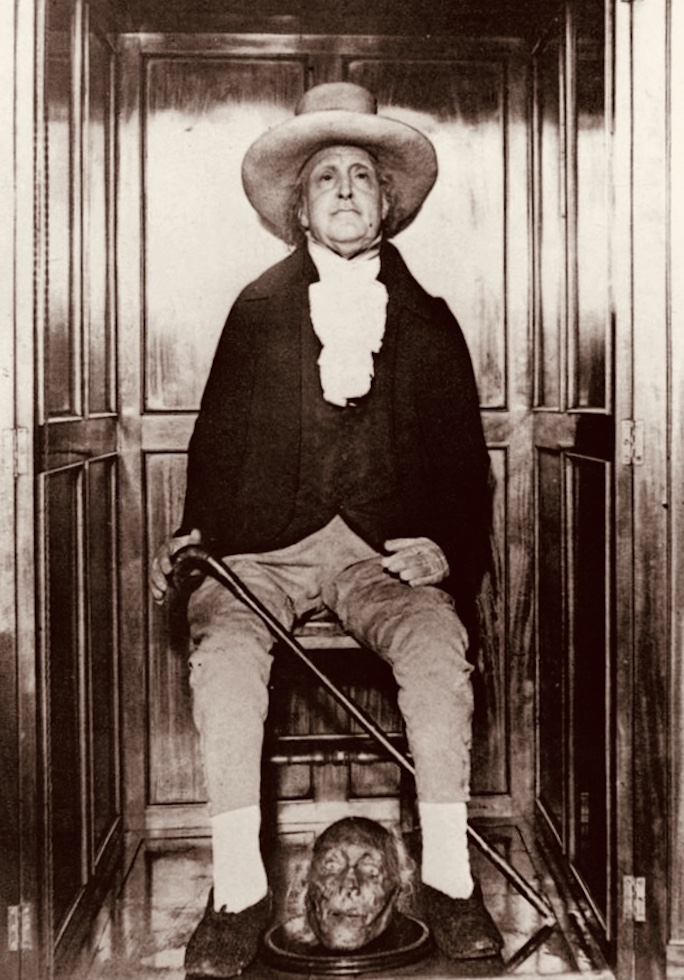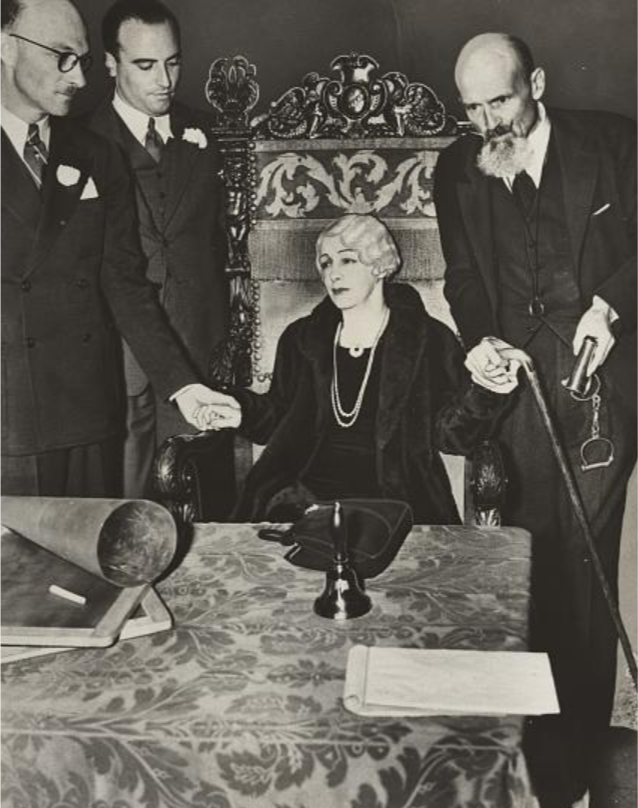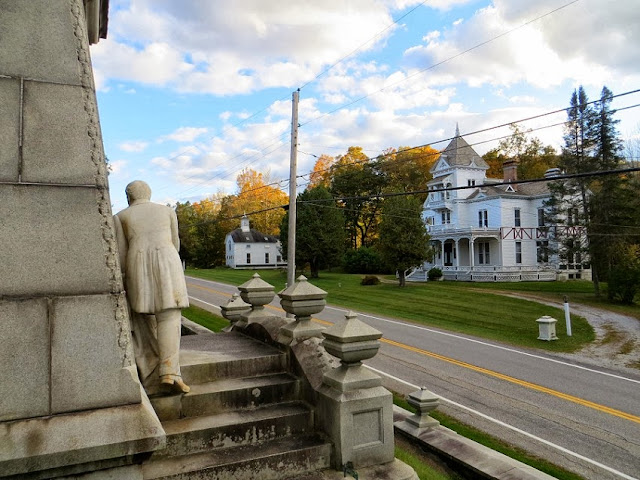These four individuals used their Last Wills and Testaments to cling to life just a little longer- albeit, posthumously. From inventive instructions for their physical remains to decade-long pacts in hopes returning the world of the living, each found a way for their Will to continue their unique legacy.
Solomon Sanborn’s Drums
Solomon Sanborn was a hat maker by trade and a fervent patriot living in Massachusetts until his death in 1871. In his Last Will and Testament, Sanborn left one final wish: that his skin was to be turned into two drums, one inscribed with the Declaration of Independence and the other with Alexander Pope’s “Universal Prayer.” The Aspen Daily Times, a Colorado-based newspaper, investigated the story in 1892 in an article titled “Ghastly Drum-Heads.”

“Solomon was a good friend of Dr. Oliver Wendell Holmes and left his body to Dr. Holmes on the condition that the doctor would carefully remove the skin, which was to be converted into two drum-heads,” The Aspen Daily wrote. “The drum was to have been presented to a local drummer, a friend of both Sanborn and Dr. Holmes, on condition that he, the drummer, repair to the foot of Bunker Hill monument on each succeeding anniversary of that famous battle and beat the soul-stirring strains of “Yankee Doodle” upon the dried cuticle of the departed patriot.”
The article and other accounts pay homage to Sanborn’s deep patriotism. The Aspen Daily wrote, “Mr. Sanborn especially glorified in the part that Massachusetts took in the Revolutionary struggle, and that he was never happier than when relating some personal experience in the days when “American babies were kicking Father England’s shins.”” As far as the reported could discern, Solomon’s ghastly drums were never created. Other accounts, however, claim differently.
The Auto Icon
Jeremy Bentham was an 18th and 19th century attorney and philosopher whose Will contained specific instructions for his remains. At the time, many thought it an eccentric, last-minute whim, but unpublished papers have given recent insight into the thinker’s reasoning. He died on June 6th, 1832, and his final Last Will and Testament had been made just days prior. It read:

“My body I give to my dear friend Doctor Southwood Smith to be disposed of in a manner hereinafter mentioned, and I direct…he will take my body under his charge and take the requisite and appropriate measures for the disposal and preservation of the several parts of my bodily frame in the manner expressed in the paper annexed to this my will and at the top of which I have written Auto Icon. The skeleton he will cause to be put together in such a manner as that the whole figure may be seated in a chair usually occupied by me when living, in the attitude in which I am sitting when engaged in thought in the course of time employed in writing. I direct that the body thus prepared shall be transferred to my executor. He will cause the skeleton to be clad in one of the suits of black occasionally worn by me.
The body so clothed, together with the chair and the staff in my latter years borne by me, he will take charge of and for containing the whole apparatus he will cause to be prepared an appropriate box or case…If it should so happen that my personal friends and other disciples should be disposed to meet together on some day or days of the year for the purpose of commemorating the founder of the greatest happiness system of morals and legislation, my executor will from time to time cause to be conveyed to the room in which they meet the said box or case with the contents therein to be stationed in such part of the room as to the assembled company shall seem meet.”
Bentham’s wishes were carried out to the letter—almost. The preservation process distorted his head and face too badly, and a wax replica had to be created in its stead. His real head was placed at his bodies feet for years before it was eventually removed from the exhibition.
Today, Bentham’s body, known as the Auto Icon, has been moved from it’s wooden cabinet and set in a glass case. It’s displayed at the University College London’s Student Centre, where it was given a permanent home in 2020.
The Illusionist
Harry Houdini was a world-renowned escape artist and performer fascinated with the idea of an afterlife and spiritual mediums. Prior to his death, he made a pact with his wife, Bess. According to the Library of Congress’ blog, he and Bess agreed that whoever died first would try to contact the survivor from the afterlife. “If contact was not made within ten years, the pact would be broken and the notion of communication with the dead refuted,” the Library of Congress wrote. “Houdini promised Bess that his spirit would deliver a message in code and open a pair of locked silver handcuffs.” The couple even came up with a secret message, so Bess could know for certain it was Houdini contacting her. His Last Will and Testament decreed that a séance should be held on the anniversary of his death for those ten years to attempt contact.

On October 31st, 1926, Houdini died from a ruptured appendix. Bess stayed true to their pact—every Halloween, on the anniversary of Houdini’s death, she held a séance, attempting to communicate with her late husband. For nine years the séances were unsuccessful, and Houdini did not contact Bess. Finally, the tenth and last year of the pact came. Bess held the ceremony in front of 300 invited guests, on the roof of Hollywood’s Knickerbocker Hotel, broadcasting the event over radio. After a performative ritual lasting a couple of hours, Bess spoke as she shut the doors of the Houdini shrine.
“Houdini did not come through. My last hope is gone. I do not believe that Houdini can come back to me, or to anyone. After faithfully following through the Houdini ten year compact, after using every type of medium and séance, it is now my personal and positive belief that spirit communication in any form is impossible. I do not believe that ghosts or spirits exist. The Houdini shrine has burned for ten years. I now reverently turn out the light. It is finished. Good night, Harry.”
With those words, Bess left the rooftop and the disappointed audience. As as soon as she walked away, however, a torrential downpour was unleashed from what had been a clear sky, soaking every one of the onlookers. Many of Houdini’s fans believe it was the illusionist making belated contact. All around the world, on Halloween night, there are still those that hold seances attempting to contact the Houdini’s spirit.
The Grieving Socialite
In his lifetime, John Bowman was wildly successful in business- and horribly unlucky in his personal life. Between 1854 and 1880, both his young wife and two daughters predeceased him. Wrought with sorrow, Bowman commissioned an elaborate memorial be built for them. The endeavor took 125 sculptors to complete, and included a life-sized sculpture of a grieving Bowman outside the entrance. The three caskets containing his wife and daughter were placed inside and the memorial adorned with trees, a greenhouse, and a conservatory. The project is reported to have cost $75,000- the equivalent to around $2,000,000 today.

To remain close to his deceased family, Bowman then erected a 21-room Victorian mansion across the street, which he named Laurel Hall. He lived there for a decade before he joined his wife and daughters in death, dying in the house he’d built so close to his family’s tomb. Before he passed, however, Bowman had become a fervent believer in life after death. In his Last Will and Testament he left $50,000 to the U.S. Trust Company of New York for a Trust to be created. This Trust was to maintain his estate “in perpetuity”, which two friends were to oversee.
As the story goes, Bowman strongly believed in reincarnation and wanted the house ready for his family’s return. Many accounts claim his Will instructed fires be kept burning in the hearths and a hot meal be served for every dinner, the table set for four. From 1891 to 1950, his wishes were carried out, until the money he’d left finally ran out.
A Unique Plan for Every Client
At Susan Hunt Law, we always say every situation is unique and design plans that reflect each client’s situation. These four men took unique to a new level! Stay safe this Halloween, and keep an eye out for Houdini’s spirit.
